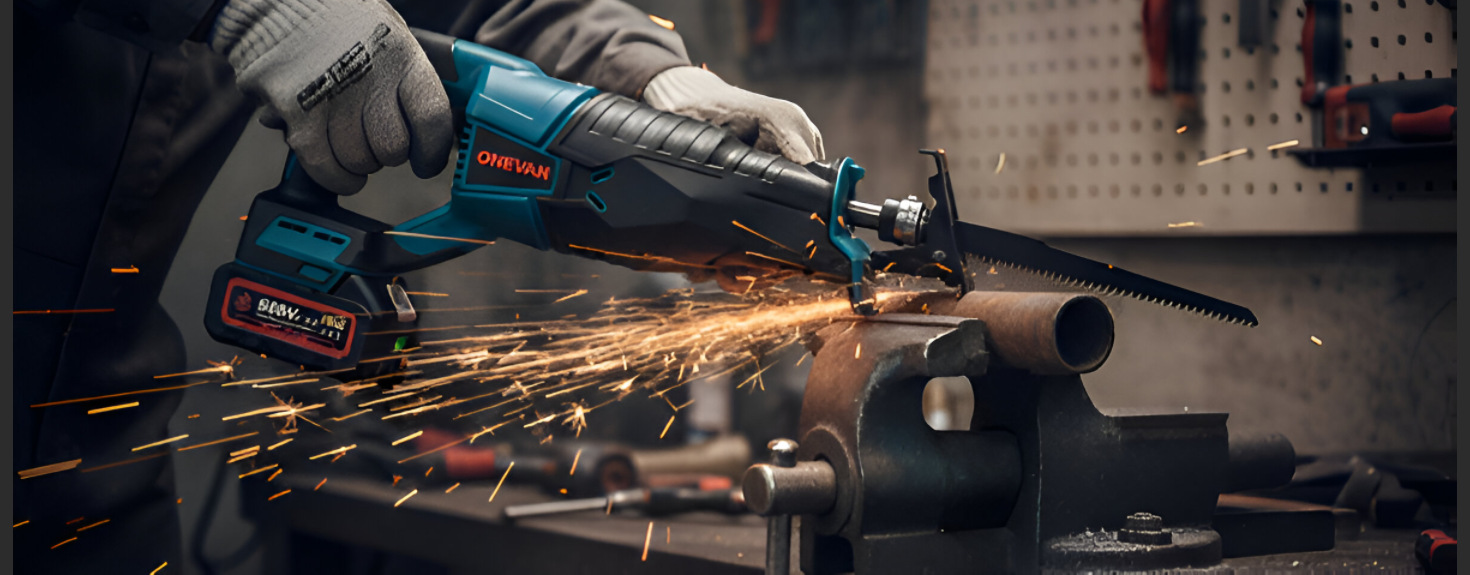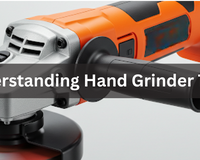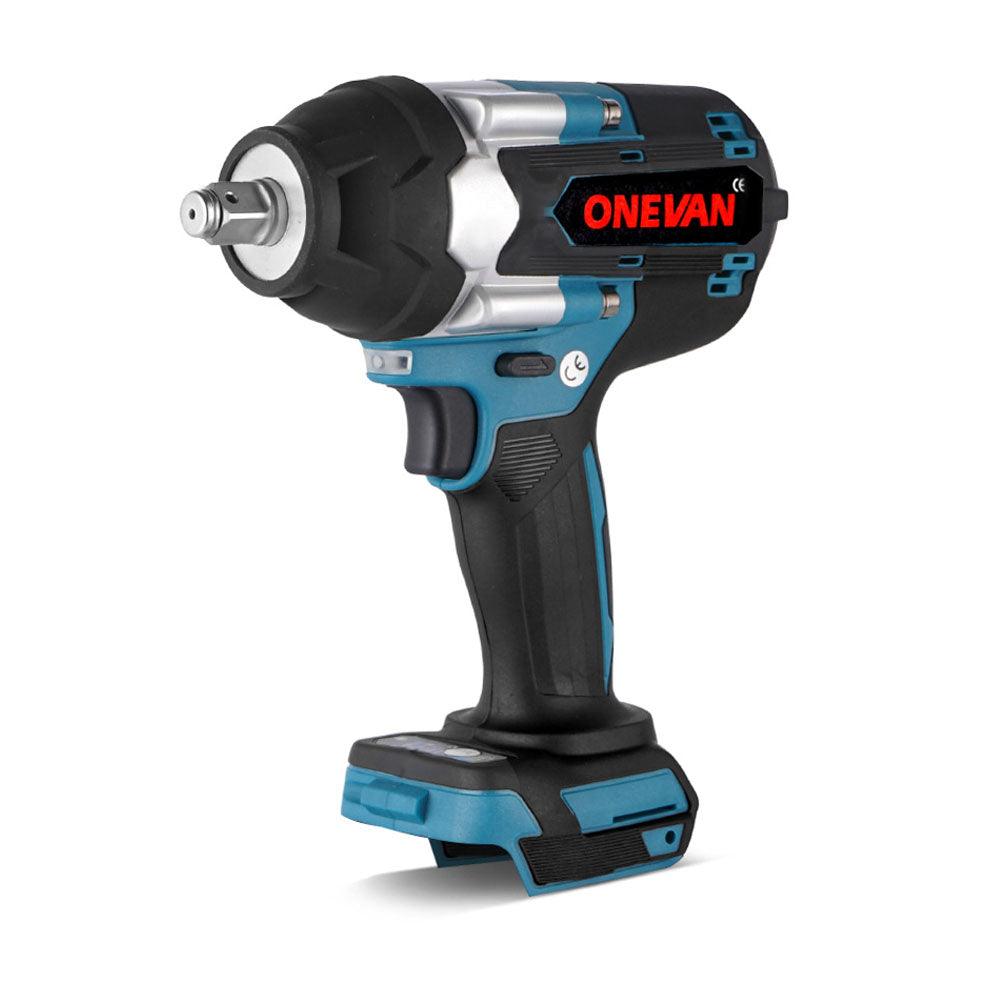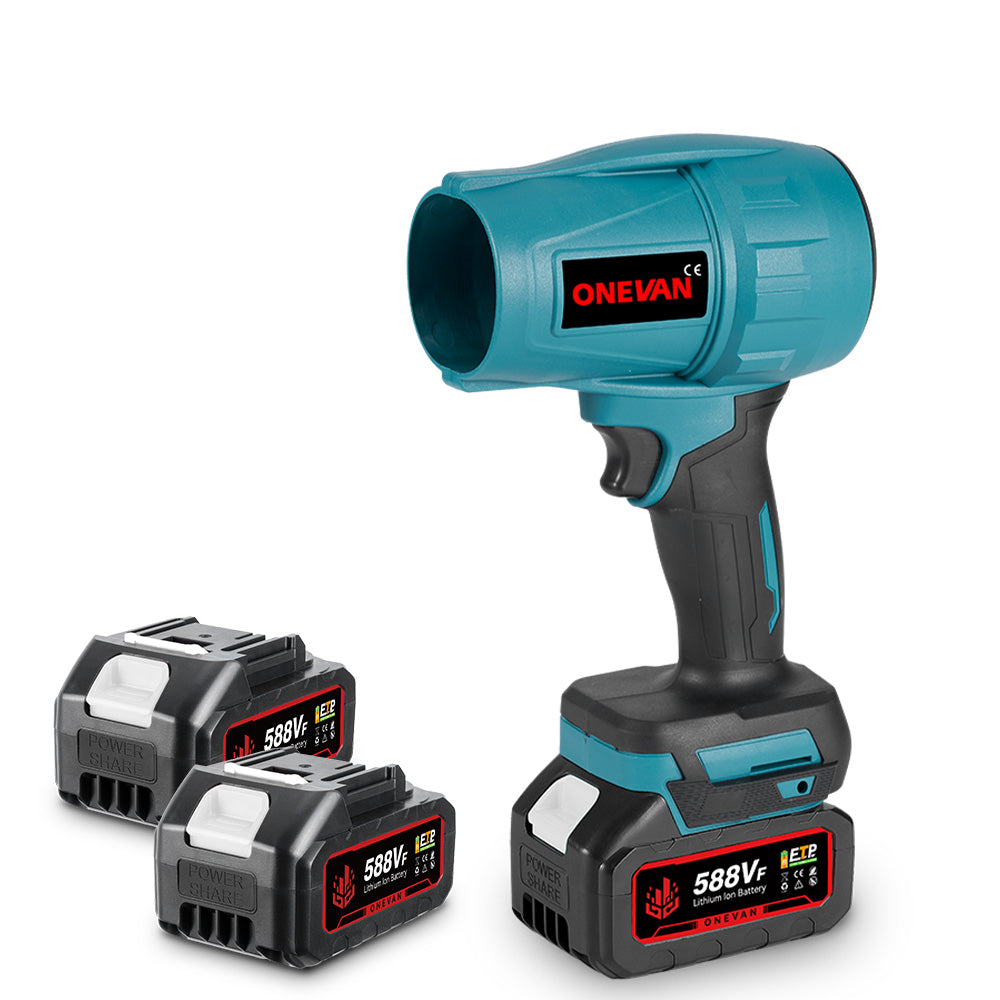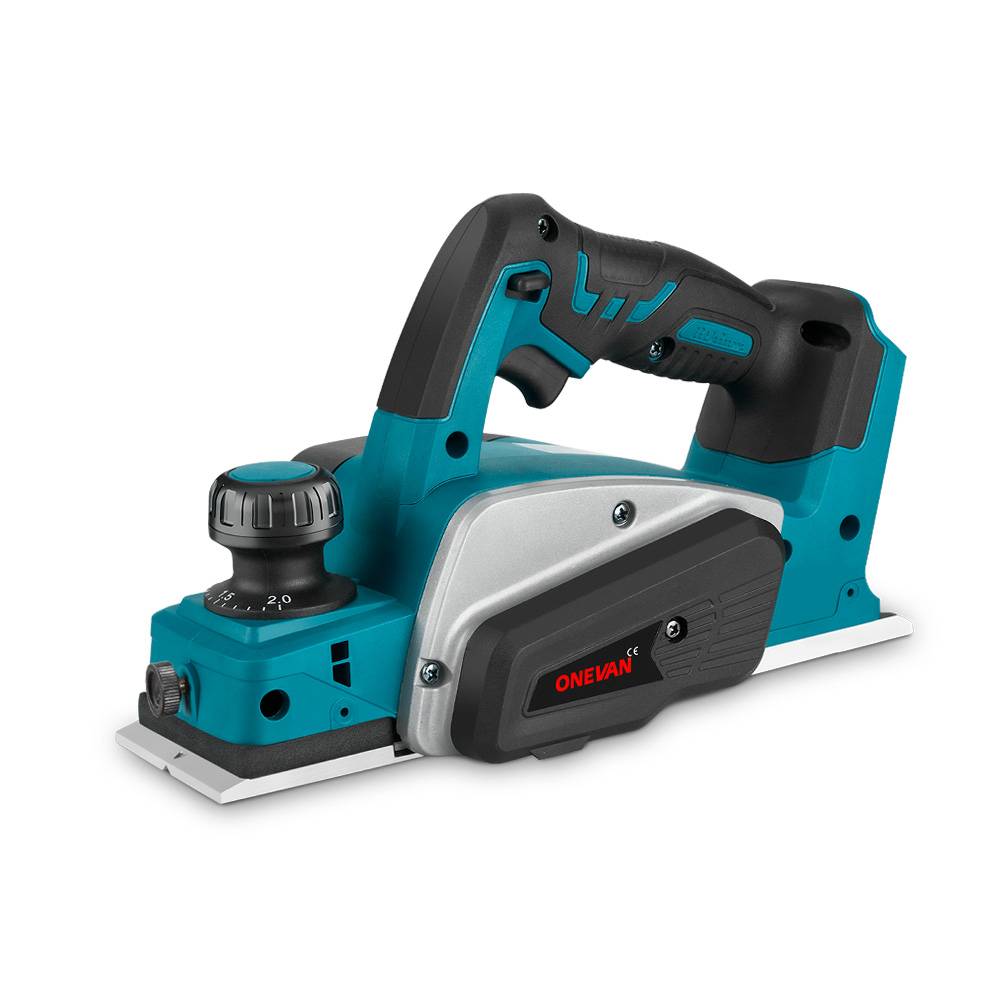There has always been a debate on the internet regarding the reciprocating saw and the Sawzall. Most people are confused whether they are the same or not. So basically, a reciprocating saw is a specific type of saw that works either corded or cordless.
While the Sawzall is the brand name developed by Milwaukee, both tools share many features, but there are a few differences that we will discuss in this article. After reading this article, you will be able to understand which type is best for you and why you should choose one. So let’s dive in!
1. Understanding the Reciprocating Saw and Sawzall
What is a Reciprocating Saw?
A reciprocating saw is a power cutting tool that can handle a wide variety of materials, from wood, metal, PVC, pipes, plastic, masonry, and drywall. It’s like a Swiss Army Knife of saws. It works on the principle of reciprocation, characterized by the blade’s back-and-forth movement. The blade of the reciprocating saw moves back and forth over the material, using a push-pull mechanism to cut through it.
This tool consists of several key components, including a motor or battery, a speed trigger, a blade clamp, and a shoe, which work together to facilitate cutting. In a corded saw, you need a direct power supply, whereas with a cordless reciprocating saw, you simply attach the lithium-Ion battery and start your work. The motor provides power, while the speed trigger allows the operator to control the cutting speed. The blade clamp holds the blade, the shoe keeps the materials firm in place, and the blade does the actual cutting work.
What is a Sawzall?
In 1951, during the post-World War II era. Huge reconstructions were happening after the brutal war. New buildings were being constructed left and right, and all the manufacturers were struggling. They needed some tools to make their life easier. In response to the need for more efficient tools, Milwaukee developed the Sawzall, which quickly gained popularity in the market.
One key design element of the Sawzall that set it apart from other tools was the innovative blade clamp. Previously, the blade-changing mechanism was a nightmare for the manufacturers, but Sawzall made the lives of builders and contractors easier, marking a revolutionary change similar to the transition from rotary phones to smartphones. It was revolutionary. Subsequently, many other brands of reciprocating saws incorporated similar blade clamp mechanisms, enhancing user convenience.
2. Similarities Between a Reciprocating Saw and a Sawzall
Mechanism of Action
Both the reciprocating saw and the Sawzall work on the same principle of reciprocation. Their blades move back and forth over the material, and this motion helps to cut different materials in a very efficient way. Whether it's remodeling, renovation, or rough cuts, the reciprocating principle works best.
Versatility
One of the most common similarities between the reciprocating saw and the Sawzall is the versatility. Both instruments can cut a wide variety of materials. If you need to cut wood, plastic, PVC, metal, or any other materials for renovation or new construction, these tools will work best for you. So in terms of versatility, you can trust any of them.
Blade Options
Both the reciprocating saw and the Sawzall can use different types of blades. You can change the blade immediately for different material types using the blade clamp. Here are a few types of blades for different materials.
- Wood Cutting Blades: High-carbon steel blades that are used to cut wood.
- Metal cutting blades: Bi-metal or carbide-type blades for metal sheets, and similar materials.
- Specialty blades: For demolition or pruning purposes
3. Key Differences Between a Reciprocating Saw and a Sawzall
Brand vs. Generic
The number one difference between a Sawzall and a reciprocating saw is the brand name. Sawzall is the brand name developed by Milwaukee, while the reciprocating saw is a general term for a type of saw. Sawzall is a type of reciprocating saw, but not all reciprocating saws can be called a Sawzall. In recent decades, the Sawzall became highly popular as a heavy-duty cutting instrument, leading many users to conflate the terms 'reciprocating saw' and 'Sawzall' in casual conversation. But you got the clarity now.
Design and Performance Features
- Vibration Control
Unlike an ordinary reciprocating saw, a Sawzall has a built-in vibration control system. With this system, the vibration control feature enhances grip and control during use, reducing the likelihood of losing control, which can occur with standard reciprocating saws under certain conditions.
- Power
Sawzall works on high-power motors making it the best choice for heavy-duty cutting tasks where an ordinary reciprocating saw will not work properly in the long run.
- Weight
Sawzalls are usually heavier than ordinary reciprocating saws because of the high-power motor. On average, Sawzalls range between 7 and 10 pounds. While reciprocating saws are generally lighter, reduced weight can lead to increased vibration and potentially a shorter lifespan; however, this varies depending on the specific model and design.
Price Range and Availability
Sawzall is available at a higher price than a reciprocating saw because of the high-power motor and ergonomic features. Usually, the price of a Sawzall typically ranges from $100 to $300. In contrast, the reciprocating saws range from $50 to $250. It depends on your choice. Some prefer a Sawzall for its extended durability, while others opt for a reciprocating saw for easy use at home.
4. The Applications of the Reciprocating Saw and the Sawzall
Ideal Projects for a Reciprocating Saw and Sawzall
1. Demolition Work
Both reciprocating and Sawzall are suitable for demolition purposes because speed is the most important factor in these tasks. And both of them have a high working speed.
2. Home Remodeling
During home renovation, there is a lot of stuff to cut through, like metal, wood, plastic, etc. So a Sawzall and a reciprocating saw are the best ones at cutting a wide variety of materials.
3. Tree Trimming and Yard Work
With the special pruning blades, these saws are very effective for trimming tree branches and clearing debris from the yard. Just keep in mind the use of the right blade.
4. Pipe Cutting and Plumbing Projects
Through metal cutting blades, you can cut any type of pipe during your plumbing work. Hence, these tools have become the favourite of plumbers.
5. Furniture Assembly and Modification
During furniture building, a variety of cutting tasks are required, from shaping wooden components to assembling structures efficiently, this makes reciprocating saws and Sawzalls ideal tools for this purpose.
6. Building Decks and Fences
During construction, these saws can speed up the cutting of fence posts and deck boards. No matter if there are nails in the materials, the recip saw and Sawzall cut them down without bending the blade.
7. Automotive Repairs
Mechanics use a reciprocating saw and a Sawzall for the repair work. With the help of elongated blades, they easily cut down the materials in hidden and tight spaces.
8. Renovating Old Homes
In home renovation, both reciprocating saws and Sawzalls are effective because they can cut through various materials, including pipes, stubborn fasteners, and leather.
9. Creating DIY Projects
For DIYers, reciprocating saws and Sawzalls are the best tools for crafting different types of materials. You just need to select the suitable blade type for different projects. As you know, for small instruments, small-length blades will work best.
Professional vs. DIY Use
Based on the size and the affordability of these two different saw types, the reciprocating saw is considered suitable for DIY projects. In contrast, the Sawzall is good for professionals, as it generally has larger dimensions and added features compared to basic reciprocating saws. Ultimately, the decision depends on your specific project needs, allowing you to choose either a reciprocating saw or a Sawzall.
5. Troubleshooting Common Issues for Reciprocating Saws and Sawzalls
1. Blade Jamming
Issue: The blade gets stuck in the material while cutting.
Causes: Use of an inadequate blade for cutting.
Solutions: Use a specific blade and don't put force while cutting. Let the blade do the work.
2. Excessive Vibration
Issue: Too much vibration in the saw, which loses your control.
Causes: If the blade is not installed properly or if it is worn out.
Solutions: Make sure the blade is properly installed and avoid using a worn-out blade.
3. Overheating
Issue: The blade or the saw becomes too hot while in use.
Causes: If the saw is used for a long time without breaks and there is low ventilation, it can lead to safety issues.
Solutions: Let the tool rest in between cutting and make sure to have a proper ventilation system.
4. Poor Cutting Performance
Issue: Slow and uneven cuts due to poor cutting performance of the instrument.
Causes: If the blade is wrong, dull, or damaged, and the person operating the saw is non-professional.
Solutions: Choose the suitable blade for cutting and operate the saw professionally.
5. Blade Breakage
Issue: While cutting, the blade gets snapped.
Causes: If you force the blade while cutting or use an inappropriate blade.
Solutions: Replace the blade when it shows signs of wearing off. And don’t apply force while cutting.
6. Difficulty in Changing Blades
Issue: The blade requires too much effort to release.
Causes: If there are dirt or dust particles inside the blade, and you use the incorrect method to release them.
Solutions: Regularly remove the dust from the blade and follow the manufacturer's instructions for changing the blade.
6. Buying Guide: Which One Should You Choose, Reciprocating Saw or Sawzall?
Factors to Consider When Buying
If you are uncertain about choosing between a reciprocating saw and a Sawzall, here are some factors to consider to help you make your decision.
Power Source
Corded saws provide a continuous power supply and are suitable for heavy-duty cutting tasks where high power and speed are important. The cordless saws are suitable for outdoor cutting tasks where convenience and portability are considered important. So you can choose the one according to your requirements.
Weight
Sawzalls are usually heavier than ordinary reciprocating saws because of the high-power motor. It usually weighs around 7-10 pounds. While a reciprocating saw is lighter, sometimes lighter weight means more vibration, less power, and shorter life span.
Budget
Sawzalls are considered high-quality and premium, which makes them expensive. In contrast, the reciprocating saws are cheaper. If you have a budget to pay for a Sawzall, you can own it for long durability and premium quality. However, if you are on a lower budget and need a tool for DIY or lighter cutting tasks, a reciprocating saw would be a suitable choice.
Recommendations for Brands and Models
Cordless reciprocating saws are usually considered the best ones because of their affordability and portability. Due to its lightweight, you can easily carry it for outdoor cutting activities and small home cutting tasks. And due to its light weight, you will not feel fatigue in your hands.
If we talk about the trusted brands for cordless reciprocating saws, ONEVAN is always at the top of the list. Its 15mm brushless cordless reciprocating saw is trusted by so many professionals. And you know what, its price is super budget-friendly. So you can visit ONEVAN tools to get yours.
7. Conclusion
Sawzalls and reciprocating saws share some features, but there are also differences. Sawzall is a brand name, while "reciprocating saw" is a term used for all reciprocating saws. The former works on a high-power motor and is expensive, while the latter works on a low-power motor and is cheaper in price than a Sawzall. For heavy-duty projects where performance is critical, a Sawzall is often seen as the preferred choice due to its robust features and high power levels. If you need to complete some outdoor cutting and home tasks on a tight budget, a cordless reciprocating saw will be the best option. So you can choose the one based on your work type and budget. Happy sawing!
8. FAQs
Can I use Sawzall blades on a reciprocating saw?
Yes, you can use Sawzall blades in a reciprocating saw because they have the same shank design.
Can I use a reciprocating saw for cutting metal?
Yes, a reciprocating saw can be used for metal with the metal cutting blade.
Are cordless reciprocating saws any good?
Cordless reciprocating saws are suitable for outdoor activities and are portable to use.
Can you use a reciprocating saw to cut trees?
You can use a reciprocating saw equipped with pruning blades for cutting smaller tree branches and limbs.
Can a reciprocating saw cut 2x4?
Yes, you can cut 2x4 lumber using a wood cutting blade.
Can a reciprocating saw cut concrete?
No, these saws cannot cut concrete easily. For this purpose, angle grinders or concrete saws work better.
Can a reciprocating saw cut nails?
Yes, a reciprocating saw can easily cut nails with the help of a bi-metal blade.
Can a reciprocating saw cut tile?
Yes, bi-metal blades can easily cut through nails and screws.

